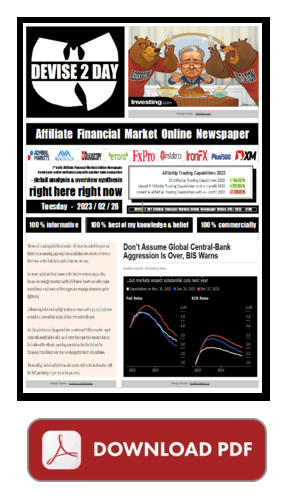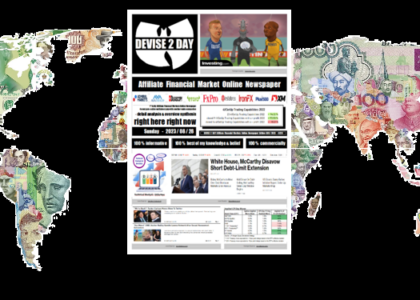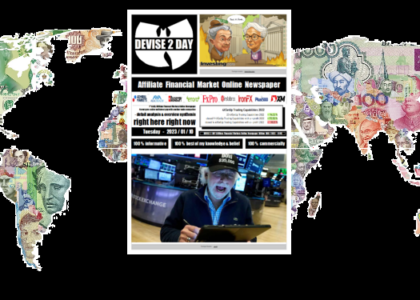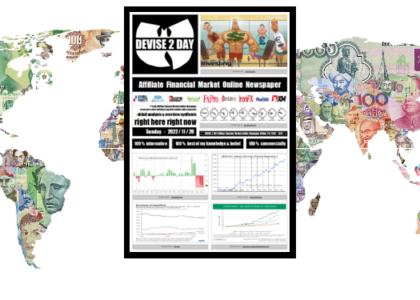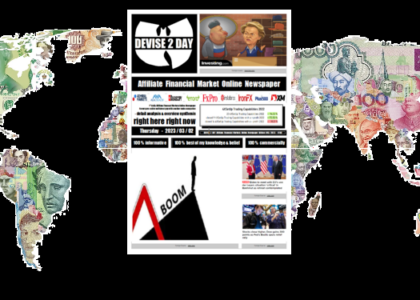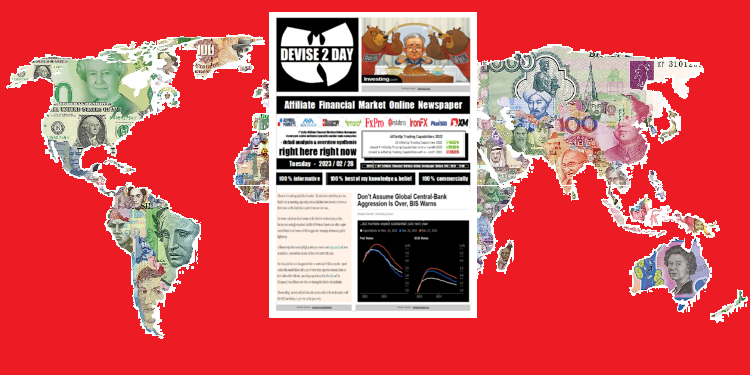
2023/02/28 (180.043) Technical Analysis – … & IDC-EURUSD
EURUSD Again On The Way To The Southeast
– If 1.0636 Fails, A Fall To 1.0459 & 1.0349 Is Possible!
The Fed will keep rates higher than I expected!
Whether the markets are correctly assessing the development of inflation will be shown by the size of the interest rate hikes!
From a macro perspective, the events of 2022 were largely driven by the actions of central banks around the world. While the fight against inflation will continue in 2023, discussions are now more focused on the recession and a possible weakness of the US dollar. Franklin Templeton economists comment on whether markets are pricing inflation correctly.
Sonal Desai, CIO at Franklin Templeton Fixed Income:
“I think the US inflation estimate at around 3% is optimistic. First, macroeconomic policy is still fairly loose. This may sound strange considering the US Federal Reserve has hiked interest rates. But the US will run a budget deficit this year that is likely to be around 5% of gross domestic product (GDP). Social Security payments are up nearly 9% this year and are being paid to about 70 million people — about a third of the adult population. And don’t forget, the Fed’s balance sheet is still huge. Second, the market has rightly taken great comfort in the fact that wage developments are moderate. However, the Federal Reserve Bank of Atlanta’s latest wage growth tracker shows that overall wages rose 6.1% in December, with those who switched jobs up 7.7% and those who left their previous job up 7.7% have retained have increased by 5.5%. And unit labor cost growth was 5.2% to 5.3%. Historically, the personal consumption expenditure (PCE) index has moved in line with unit labor costs, and the December reading was well above the Fed’s inflation target of 2%. So we have a US unemployment rate of almost 3.5%, a US budget deficit of about 5% and wages are still rising. Meanwhile, markets are expecting a change in monetary policy from the Fed in the near future. However, I am of the opinion that one or the other may suffer from a “recency bias” (recency effect). Many see the Fed’s current tightening cycle as temporary. It should be noted, however, that in the wake of the global financial crisis, the Fed waged a more than decade-long battle against deflation – against a dog that never barked. She pulled out all the easing levers to solve the problem because the global financial crisis was such an awfully big and significant event. I think that the last few years of well above target inflation will be followed by a multi-year period in which the Fed keeps interest rates higher than what the market is currently expecting.”Mark Lindbloom, Portfolio Manager at Western Asset, part of Franklin Templeton:
“Forecasters on the team believe year-over-year inflation in the US could hover around 2% by the end of this year. Looking at the setting – I’m talking about the market for short-term inflation swaps – and looking at the price action in the headline consumer price index (CPI), it may come as a surprise to many that inflation was at or below 2% yoy in the fourth quarter of 2023 could. It is the first time in a long time that prices or the CPI fix are below our forecast.
Oil and energy are, of course, very important components of inflation, and the price of oil is currently around $75-$80 a barrel. The situation could change drastically. But if annual inflation falls from over 6% in 2022 to 2% by the end of 2023, as the market seems to be expecting, then that is also in line with our view. How do we get there? With regard to overall inflation, the development of commodity prices certainly plays a role. But whether it’s rentals, autos, healthcare or other services, we’re seeing a general downward pressure on inflation on the goods side, on the manufacturing side. In the case of services, the development is somewhat slower. Looking at the inflation figures and our expectations for 2023, we are optimistic that we will see a quick decline. The concern is that the 2% inflation scenario is now priced into the market. There is a mismatch between market expectations and Fed expectations. This is where the debate becomes extremely interesting. The market expects the fed funds rate to rise to 4.75% or maybe 5% while the Fed has signaled 5.25%. So at the February policy meeting, the market had expected – and got – a 25 basis point hike. But now a pause is expected, during which the Fed can pause and evaluate the data. Then, as the economy heads for weakness and lower inflation, aggressive easing is expected towards the end of 2023. At Western Asset, we generally agree with the market on the short-term outlook. On the other hand, when it comes to duration and the yield curve, there are lively discussions within the team. We’re not quite so sure what’s going to happen in March. The most important thing, in our view, is the Fed’s focus on employment numbers. Incomes and wages, while a lagging indicator, have turned around very, very slowly. For a real change of course and a pause on the part of the Fed, this development has to be in the right direction.”
Francis Scotland, Director of Global Macro Research at Brandywine Global, part of Franklin Templeton:
“It is probably no longer disputed that inflation will fall. The key question is: will it go back to 2%, or will we get to 3% to 4% and then see a flattening out? In my opinion, inflation will drop to 2% or maybe even lower. Our view is based on the assumption that the current situation is not a normal business cycle. We are witnessing the normalization of the economy in the aftermath of a catastrophe brought on by the pandemic, the lockdowns and the different responses to both developments. An interesting point regarding the FOMC meeting held in December: All FOMC members agreed that interest rates must continue to rise this year, even though the inflation rate I just mentioned was maintained throughout the second half of the year 2022 has declined. So the Fed changed its view on inflation from “temporary” to “structural” near the peak of the price inflation cycle in the middle of last year. Now she is focusing on how tight labor markets and persistent wage inflation could fuel service sector price inflation. However, the yield curve tells us that the market believes that it has overshot the equilibrium level over the past year in a frantic attempt to correct its mistake and forestall inflation. The yield curve is inverted. And has been for a long time. Even in the Fed’s own summary of economic forecasts, the interest rate is assumed to be 2.5% for the equilibrium scenario. So the market is saying that the central bank is overshooting. The conditions are very restrictive. This does not only apply to the yield curve. Looking at the money supply, M2 has shrunk more than ever in nominal terms; and in real terms, the money supply has contracted as much as it did in the 1980s. These conditions are what the yield curve reflects. Inflation will not rise as long as money supply growth is so weak. If you look at the development of risk assets, you can see that they have started to rally recently. Risky assets are optimistic about inflation trends. But with the Fed viewing financial conditions as part of the transmission mechanism for inflation, Fed Chair Powell has maintained his dovish rhetoric. The pace of rate hikes has slowed with February’s 25 basis point hike, but the case for lower rates is still unaddressed.”
What does this mean for us? For US bulls on Wall Street, in New York?
Equities are still too expensive thanks to the US Yield Curve as inflation is more persistent than expected!
So for better or for worse it might be better to move to Chicago and be bullish on USD and/or US YIelds! Isn`t it?
I continue to think equity markets are trading too expensive relative to most outcomes, particularly when factoring in more persistent than expected inflation and more hawkish expectations for the Fed’s interest rate path, leaving both earnings and valuations strong might endanger! Which is why I closed the Dow long position. However, not consistently the EURUSD long positionm! maybe I’ll do that in the next few days and weeks? because we now have a speculative long position in the botcoin. Because inflation in the US, let alone Europe, just won’t come down. Which makes the prospects for ion cuts for this year 2023 almost impossible. And stocks are unattractive compared to yields – New York compared to Chicago.
And not only in the USA but also in our euro zone. Which should actually support the EUR as there are several yield curves to choose from. But the bond market – i.e. the majority of all yield hunters worldwide – does not seem to favor this idea at the moment. Because the EUR is weaker than expected against the USD. Which is why I’m thinking about closing our EURUSD long position as well. Because the USD seems to be confirmed as a safe haven against the USD again this year! And or am I simply too quick with my conclusions and calculations? Gone too far? Too anticipatory? And the market, the majority of financial market participants, in all asset classes (in this case forex, yields and or stock market indices), have a different opinion? I don’t know! But what I do know is that interest rates in the Eurozone are lower and inflation is higher than in the US! And the EURUSD does not rise! And that’s not a vote of confidence in our common currency. Because the latest inflation numbers in our Euzro zone are a disaster – as briefly outlined below – despite the last interest rate hike of 50 basis points. At the beginning of February, the Governing Council of the ECB last decided to raise the three key interest rates of the ECB by 50 basis points each. Accordingly, the interest rate for the main refinancing operations and the interest rates for the marginal lending facility and the deposit facility were increased to 3.00 percent, 3.25 percent and 2.50 percent, respectively, effective February 8, 2023.DXY Falls from 7-Week High As Euro Approaches $1.06
As Investors Reposition for Further Rate Hikes In USD And/Or EUR
The dollar index extended losses to 104.9, down from a seven-week high hit above 105 as investors digest the latest economic data and try to gauge the next monetary policy steps. Hotter-than-expected economic data raised the prospect of interest rates staying higher for longer as the Federal Reserve fights stubborn inflation. Investors have now priced at least three more 25 basis point rate hikes this year and see interest rates peaking at around 5.5% by June. Market participants now look ahead to more US economic reports, such as consumer confidence, the ISM manufacturing survey, and corporate earnings. Meanwhile, durable goods orders fell more than expected in January.
The euro approached $1.06 in the last days of February but remained close to low levels of January 5th as investors repositioned for further interest rate increases from both the ECB and the Fed. Traders expect the European Central Bank to raise key rates by another 50bps in March, while the peak rate for the deposit facility is projected to reach 3.9% in February 2024. Fresh inflation data due this week should provide further clarity on inflationary pressures in the Eurozone, with the core rate seen steady at a historical 5.3%. At the same time, the Fed is expected to stick to its hawkish monetary policy longer, especially since PCE prices in the US rose more than anticipated in January.
good morning, good day, and/or good night
at whatever time, wherever you are !
right here right now :

